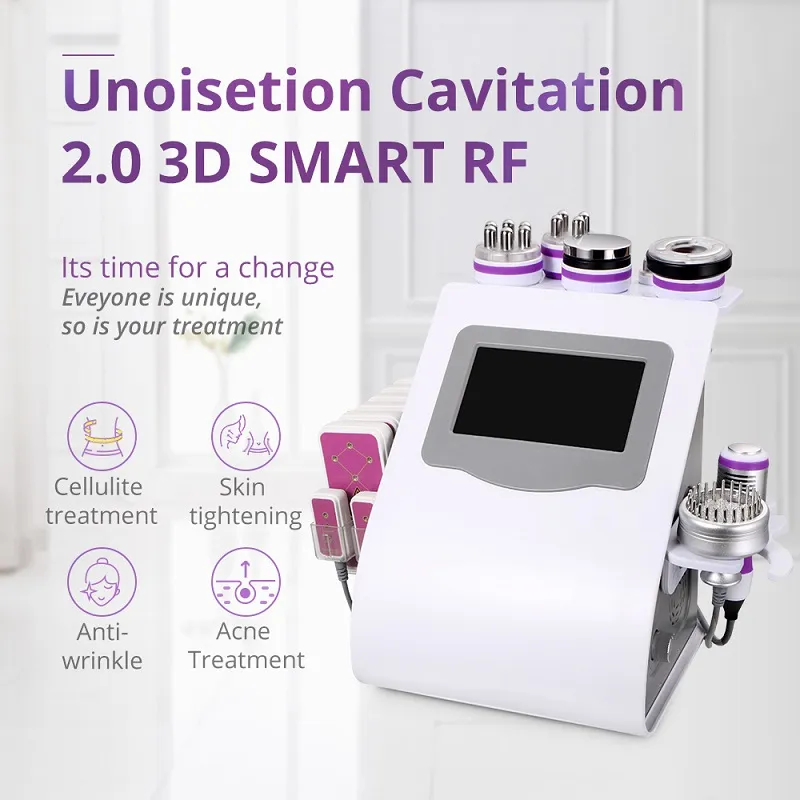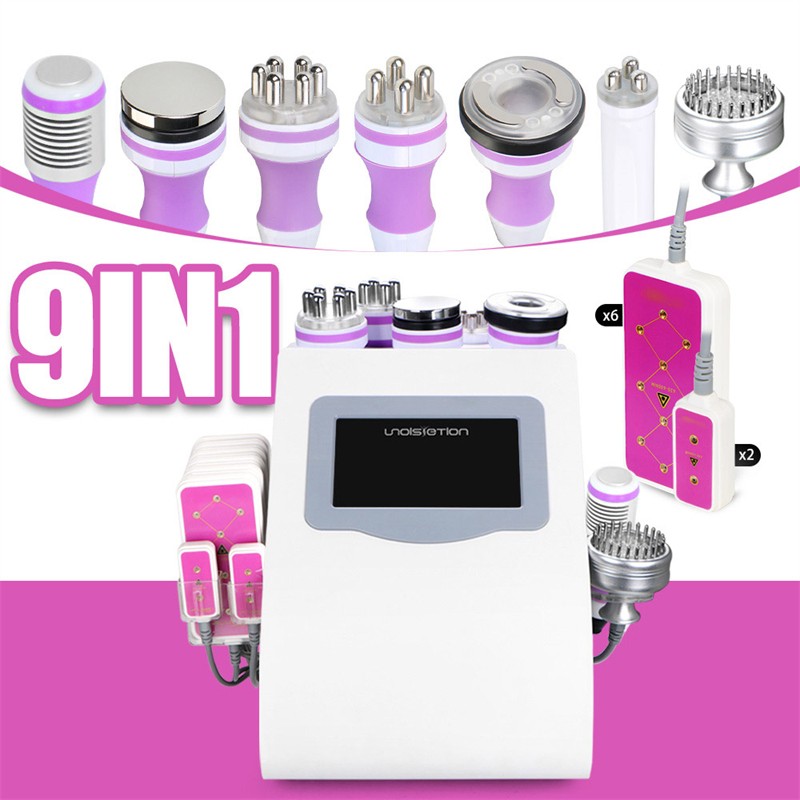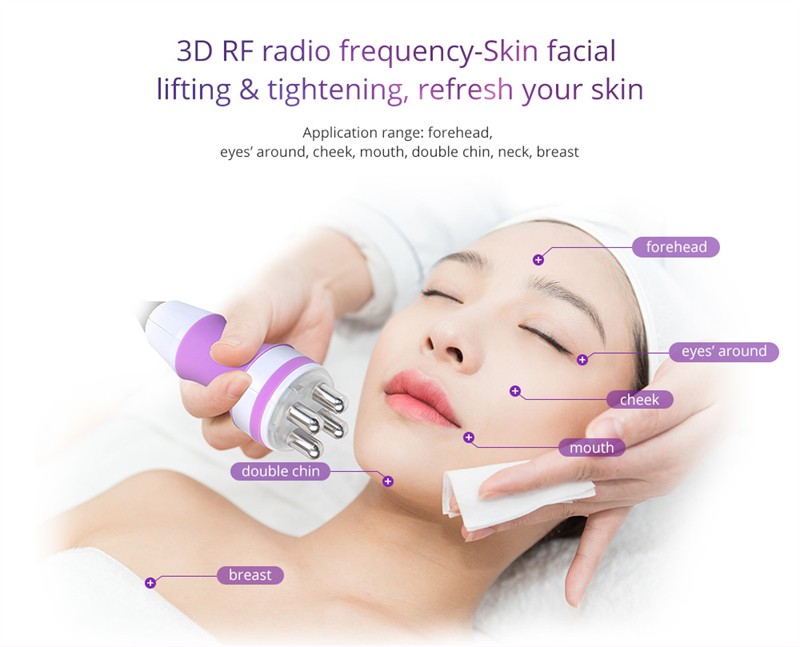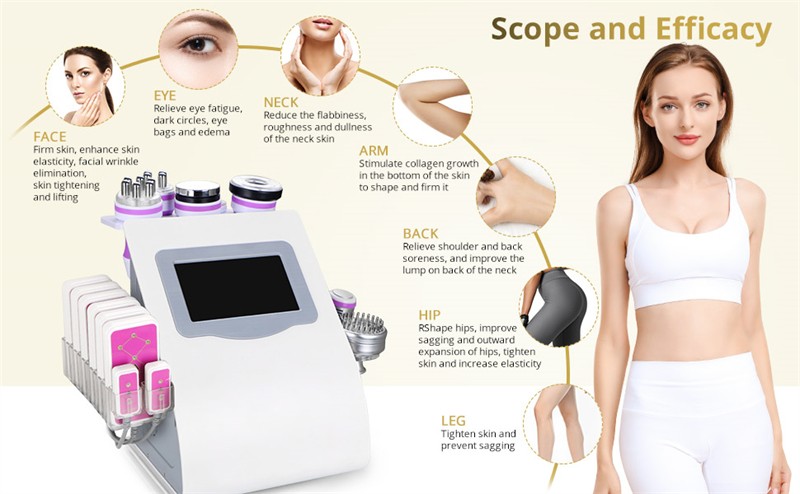
How deep can ultrasonic cavitation reach the skin?
2025-08-18 15:30
Among non-invasive body contouring techniques, ultrasonic cavitation machines have become a key device in the slimming and beauty field due to their highly effective effects on fat tissue. However, many users and practitioners often raise a key question when encountering this technology: "How deep can ultrasonic cavitation reach the skin?" This question not only affects the assessment of treatment effectiveness but also influences the establishment of safety margins.
This article will focus on this question, deeply exploring the physical principles, mechanisms of action, penetration depth, energy attenuation characteristics, and specific effects of ultrasonic cavitation technology at different skin layers. The keyword "ultrasonic cavitation machine" will be used throughout the article to ensure a rigorous and professional response to the question posed in the title.

Basic Principles of Ultrasonic Cavitation Machines
1. What is Ultrasonic Cavitation?
"Cavitation" refers to the phenomenon in which, when a liquid is subjected to intense vibrations, its local pressure drops below its vapor pressure, generating microbubbles within tiny pores. Ultrasonic cavitation machines are based on this physical process. They release ultrasonic energy at a specific frequency, which acts on water molecules in subcutaneous fat tissue, triggering a cavitation effect. This compresses and ruptures fat cells, releasing lipids that are then excreted through the lymphatic system.
2. Basic Conditions for Cavitation
• High-frequency acoustic vibrations (commonly 40 kHz)
• Compressible liquid or tissue medium (such as the water-containing environment in subcutaneous fat)
• Stable local sound intensity and temperature control
By adjusting the frequency and intensity, ultrasonic cavitation machines can control the depth of their effect, allowing them to primarily affect fat tissue rather than the surface skin.

The Relationship Between Skin Structure and Ultrasonic Cavitation Penetration Depth
To understand the depth of ultrasonic cavitation penetration, we must understand the structure of the skin and its underlying tissues:
Layers | Average thickness | Tissue composition | Functions |
| Epidermis | 0.05 - 1 mm | Avascular, stratum corneum | Protection against external stimuli |
| Dermis | 1 - 4 mm | Collagen, elastin | Provides skin elasticity and structural support |
| Subcutaneous Fat | Several millimeters to several centimeters | Adipocytes | Stores energy, cushions, and regulates temperature |
| Subcutaneous Tissue/Fascia | Varies | Connective tissue | Envelopes and supports muscles |
Ultrasonic cavitation machines primarily target the subcutaneous fat layer, not the epidermis or dermis. The energy must penetrate the subcutaneous fat layer and reach the fat tissue to effectively destroy fat cells.
Technical Factors Affecting Ultrasonic Penetration Depth
1. The Relationship between Ultrasonic Frequency and Depth
The higher the ultrasonic frequency, the shorter its wavelength and the shallower its penetration depth. The lower the frequency, the deeper the penetration, but the less precise the focus. A commonly used 40kHz ultrasonic cavitation machine can effectively penetrate approximately 2.5-5cm deep, making it ideal for targeting superficial and mid-layer subcutaneous fat tissue.
Ultrasonic cavitation frequency | Applicable Depth | Application Areas |
| 1 MHz | >3cm (Deep) | Abdomen, buttocks, thighs |
| 3 MHz | ~2cm (Middle) | Arms, waist, back |
| 5 MHz | ~1cm (Shallow) | Face, chin, neck |
| 40 kHz (low frequency ultrasound) | 2.5cm~5cm | Areas with moderate fat deposits |
2. Tissue Density and Energy Attenuation
• The epidermis and dermis, due to their dense tissue and lack of a fluid environment, have a high reflectivity.
• The subcutaneous fat layer has a loose structure and a high fluid content, making it more receptive and conductive to ultrasonic energy.
• The deeper the layer, the more pronounced the energy attenuation, and the cavitation effect decreases accordingly.
Therefore, the effective penetration depth of an ultrasonic cavitation machine is primarily between 25 and 50mm, making it most suitable for users whose target fat thickness falls within this range.

Effects of Ultrasonic Cavitation on Skin Layers
1. Epidermis and Dermis (Non-Target Areas)
• The actual impact is minimal, as most of the energy is reflected or attenuated.
• The epidermis does not contain fat cells, so cavitation does not occur.
• Slight vibration and warmth may be felt, which is normal.
2. Subcutaneous Fat Layer (Main Effect Area)
• Cavitation bubble formation and rupture are maximized.
• Fat cell membranes are disrupted, releasing triglycerides and glycerol.
• Cell metabolism and fatty acid excretion are stimulated.
3. Below the Fascia Layer (Weaker Effect)
• Energy is most concentrated approximately 5 cm above the Fascia Layer.
• Ultrasonic energy is significantly attenuated after reaching deeper layers.
• Deep muscle tissue is not significantly affected, ensuring safe use.
Comparison of penetration at different power levels of ultrasonic cavitation machines
Ultrasonic cavitation machines also produce different penetration depths depending on their power output:
| Power Output | Penetration Depth (Average) | Suitable Areas |
20-30W | 2.0cm~3.0cm | Arms, back |
| 40-50W | 3.0cm~4.0cm | Waist, hips |
| 60-70W | 4.0cm~5.0cm | Abdomen, thighs |
The appropriate power and frequency combination should be selected based on the fat thickness of the area to avoid ineffective penetration due to being too shallow or inefficient due to being too deep.
What external factors affect cavitation effectiveness?
1. Adequate gel application
A conductive medium (such as ultrasound gel) is essential for energy transmission. The absence of gel or uneven gel thickness significantly reduces energy penetration efficiency and may even cause localized skin discomfort.
2. Probe movement speed and contact area
The probe should be moved slowly. Avoid hanging, lifting, or rapid movement, as this will result in unfocused energy and unstable penetration depth.
3. Duration and frequency of use
Prolonged use does not necessarily mean deeper penetration. Ultrasonic cavitation targets fat tissue destruction, and overuse may impair tissue recovery. It is recommended that each session be limited to 20-30 minutes, and repeated local applications should be repeated at least three days apart.

The Correlation Between Ultrasonic Cavitation Depth and Effectiveness
The fat-reducing effectiveness of an ultrasonic cavitation machine directly depends on its ability to effectively penetrate the target fat layer. The following are recommended penetration depths for different areas:
Areas | Recommended Depth | Recommended frequency | Applicable Equipment |
| Abdomen | 3-4cm | 40KHz | High-Power Cavitation Machine |
| Inner and outer thighs | 2.5-4.5cm | 40KHz | Medium-Power Cavitation Machine |
| Arms | 2-3cm | 40KHz | Low-Power Cavitation Machine |
| Face | <2cm | 1MHz~3MHz | High-Frequency Radiofrequency/Facial Cavitation Device |
Based on the above analysis, we can conclude that:
The actual effective penetration depth of an ultrasonic cavitation machine is generally between 2.5cm and 5cm, depending on the transmission frequency, power setting, skin tissue characteristics, and operation method. This depth corresponds to the most common areas of mid- and shallow-layer fat accumulation in the human body, making it an ideal depth range for non-surgical weight loss interventions.
Does KuoHai offer discounts for bulk purchasing and wholesale?
Yes, KuoHai provides special discounts and promotions for large orders. As a direct manufacturer and factory supplier in China, we support wholesale sales, customized branding, and affordable OEM services. Buyers seeking to purchase beauty machines or home appliances in bulk can receive low prices, factory quotes, and reliable supply schedules.
Our mission is to help global customers access high-quality products at affordable prices while maintaining long-term business partnerships.
Get the latest price? We'll respond as soon as possible(within 12 hours)
















